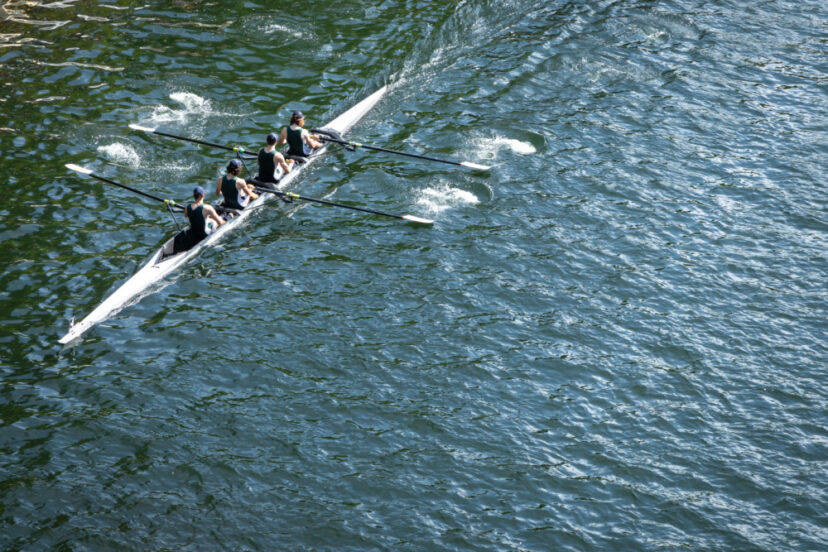What is Rowing Catch A Crab?
Rowing inside or outside is great fun. The Paris Olympics is to be held in 2024 and rowing is one of the sports. So I thought it might be useful to learn a few rowing terms in the lead up to the great event. – rowing catch a crab.
Ever heard the term “rowing catch a crab” or “catch a crab” and wondered what on earth it could mean in the context of rowing? Well, you’re in for a treat. Let’s dive into this intriguing aspect of rowing.
Introduction to Rowing
Rowing, at its core, is a beautiful blend of strength, technique, and rhythm. It’s not just about pulling an oar through the water; it’s a dance of precision and power.
Basics of the Rowing Stroke
Every stroke in rowing can be broken down into a few key phases: the catch, the drive, the finish, and the recovery. Each phase is crucial, and mastering them is essential for any rower, whether you’re a newbie or a seasoned pro.
The Importance of Technique
Technique in rowing is everything. A slight misstep can throw off your rhythm, reduce your boat speed, or even lead to injuries. And that brings us to the curious case of “catching a crab.”
Understanding “Catch a Crab” or Rowing Catch a Crab
So, what does it mean to “catch a crab”? No, it’s not about fishing for crustaceans. In rowing, catching a crab happens when the oar blade gets trapped in the water, usually during the drive phase, and it can’t be extracted in a regular, smooth motion.
What Happens When You Catch a Crab?
Imagine you’re rowing at full speed, and suddenly, one oar gets stuck. The momentum can jerk you backward, throw you off balance, or in extreme cases, even eject you from the boat! It’s as if you’re cruising on a highway and one of your car’s tires suddenly stops. Not a pleasant experience, right?
Why Does Rowing Catch a Crab Occur?
Catching a crab can result from various factors: incorrect blade depth, mistimed drive, or even external factors like choppy waters. It’s a rower’s nightmare but, unfortunately, a part of the learning curve.
Effects of Rowing Catch a Crab?
Immediate Consequences
Apart from the obvious jolt and potential embarrassment, catching a crab can disrupt the boat’s rhythm, affecting the entire crew in team events.
Long-Term Impacts
Repeated incidents can lead to a loss of confidence, making a rower overly cautious, which in turn can affect performance.
Tips on How a Rower Can Recover from a Crab
- Stay calm. It’s easy to panic when you catch a crab, but it’s important to stay calm and focused. Easier said than done but remember it won’t help the situation.
- Stop rowing. The first thing you need to do is stop rowing. This will help to prevent the boat from jerking you backward and causing you to lose your balance.
- Get the oar out of the water. After ceasing your rowing motion, the next step is to remove the oar from the water. A simple method for achieving this involves rotating the oar blade upwards. Subsequently, you can delicately lift the oar out of the water.
- Resume rowing. Once the oar has been extracted from the water, you can recommence rowing. However, it’s crucial to exercise caution to prevent the occurrence of another crab.
Here are some additional pointers:
- If you’re rowing as part of a team, communicate your crab-catching situation to your teammates. This will aid them in avoiding accidental contact with their oars.
- In turbulent waters, exercise extra vigilance to prevent crab-catching. The presence of waves can complicate maintaining the appropriate blade depth.
- For beginners, it’s advisable to practice recovering from a crab in a secure setting like a pool or serene lake. This practice will aid in becoming accustomed to the sensation and in developing muscle memory for the recovery procedure.
How to Avoid Rowing Catch a Crab
Tips for Beginners
- Focus on blade depth: Ensure it’s not too deep or too shallow.
- Perfect your timing: The transition from the catch to the drive should be smooth.
- Practice makes perfect: The more you row, the better you’ll get at avoiding crabs.
Advanced Techniques
For the pros out there, it’s all about fine-tuning. Analyzing your strokes, understanding the nuances of your boat, and even factors like wind and water conditions can make a difference.
In Summary
Catching a crab is a rite of passage for many rowers. While it can be frustrating, it’s also a learning opportunity. With the right technique, practice, and a dash of patience, you can navigate the waters crab-free!
Frequently Asked Questions
Is Catching a crab common for beginners?
Absolutely! It’s part of the learning process.
Can Catching a crab damage the boat?
In extreme cases, yes, but usually it’s m ore about disrupting rhythm.
How long does it take to master the technique to avoid crabs?
It varies for everyone. With consistent practice, most rowers get the hang of it within a few months.
Are certain water conditions more prone to causing crabs?
Choppy waters and strong winds can increase the likelihood.
Is there any equipment to help avoid catching a crab?
While there’s no specific equipment, using an oar with the right length and blade shape for your style can help.




